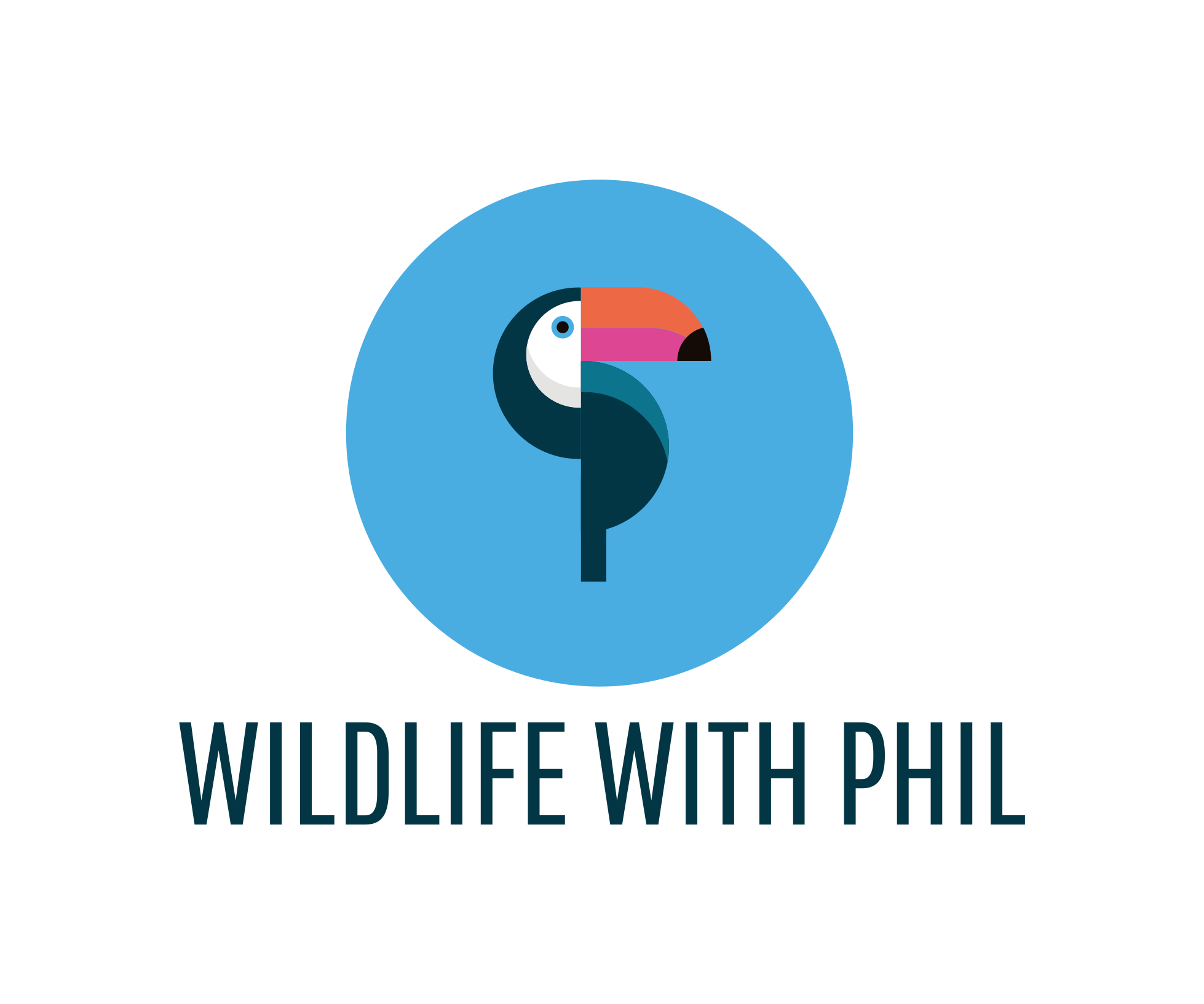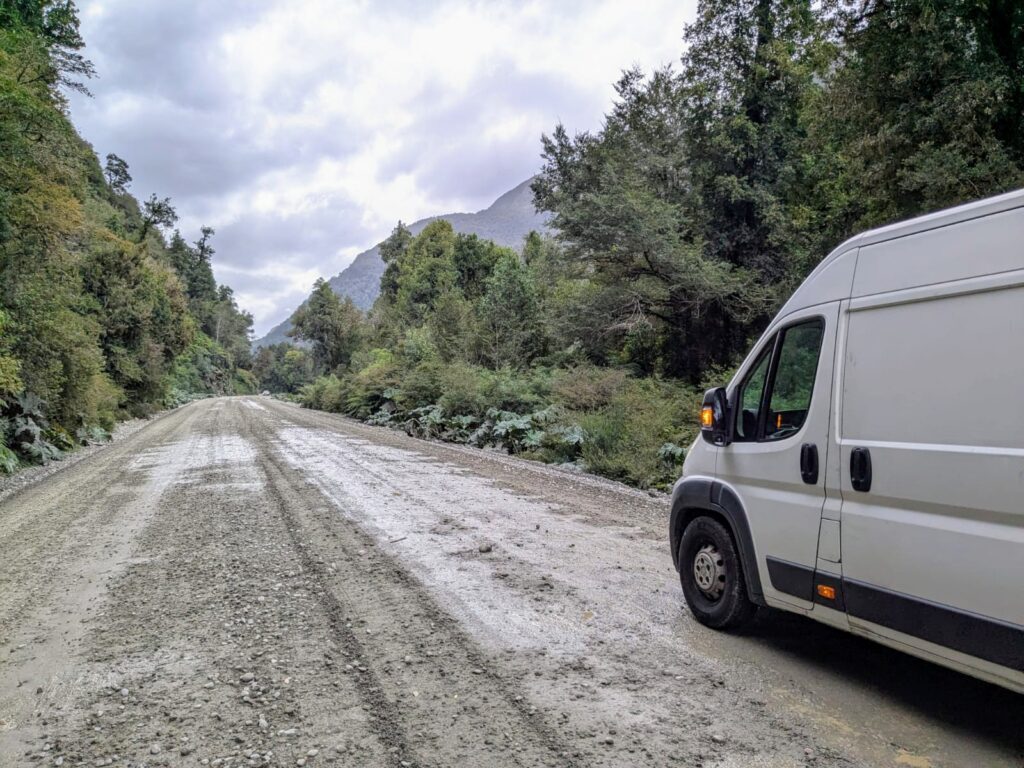
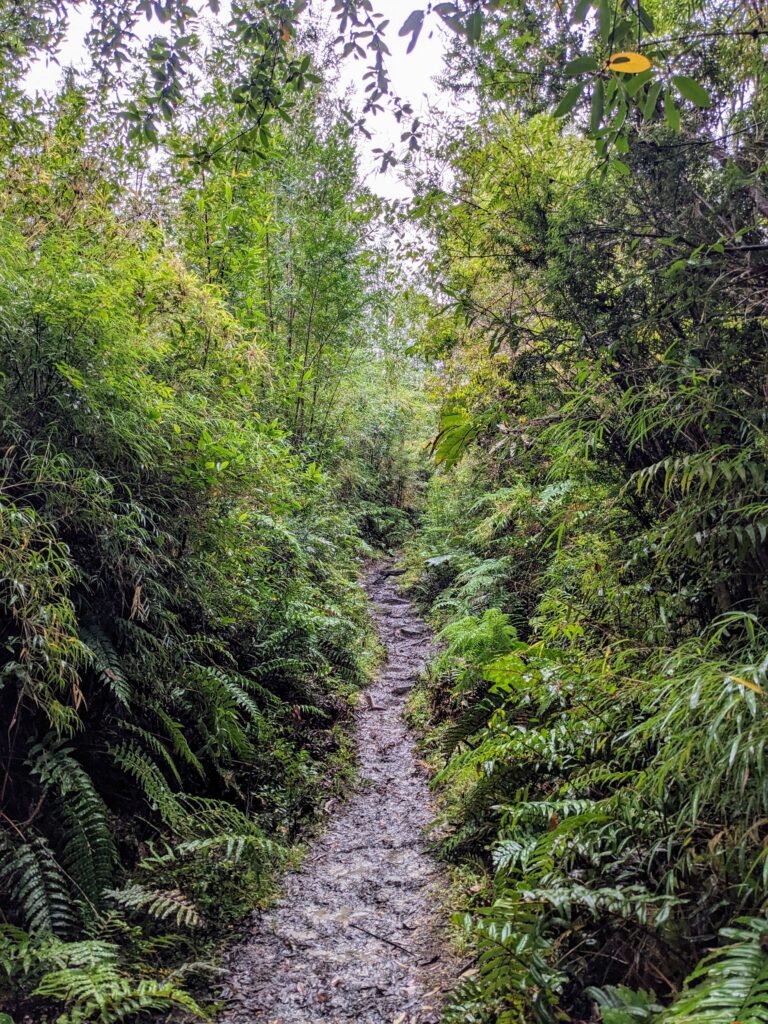
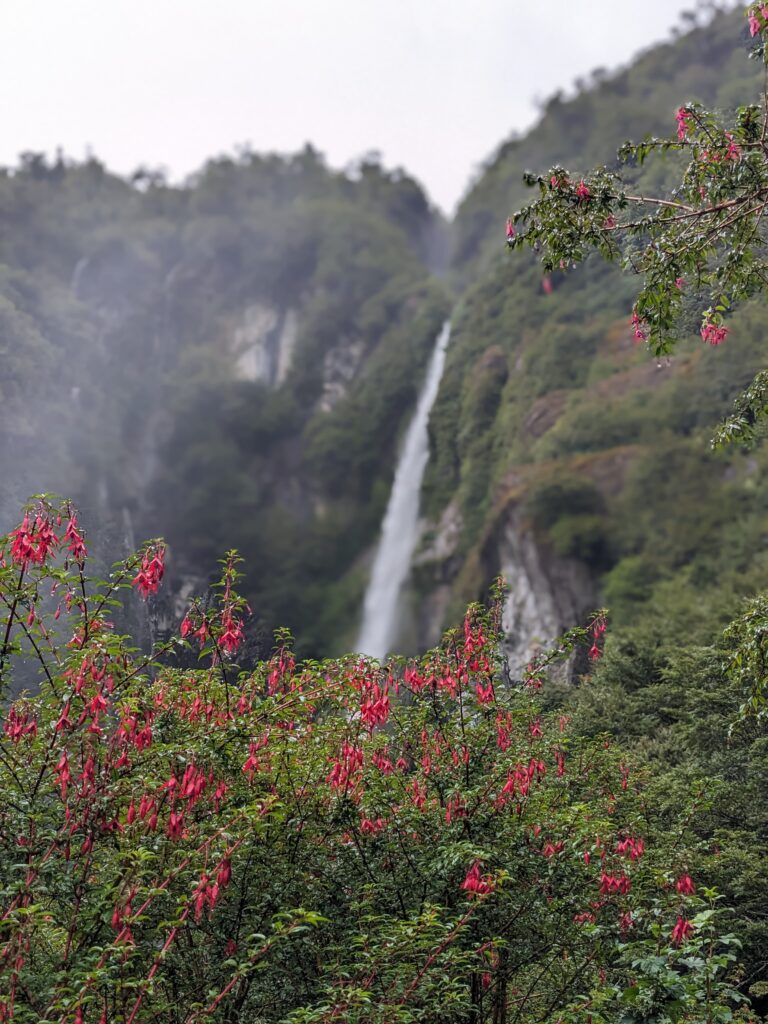
South America is full of dramatic landscapes and stark contrasts. This was no more so apparent than when journeying into the temperate rainforest of the Chilean Andes from the dry Patagonian steppe. Our aim was to join the famous Carretera Austral near Villa Cerro Castillo, and from our previous stop, Chile Chico, we took a short 2-hour ferry to Puerto Ibanez. The alternative was driving 293 km on gravel roads around Lago General Carrera, but we had been warned by a local that the road was particularly bad, and we didn’t want to do any damage to Phil!
Temperate Rainforest
Having left the dry Patagonian steppe around Chile Chico only hours beforehand, arriving at the Carretera Austral was like entering into another world, with huge mountains shrouded in clouds, magical waterfalls and vast areas of lush temperate rainforest.
The flora and fauna were completely different as well. The warning signs for guanacos and Rhea had been replaced with those for pudú, the smallest deer species in the world. We were also hearing a completely different range of birdsong, including the enchanting song of the inquisitive chucao tapaculo. In both appearance and willingness to approach us, the chucao tapaculo, known locally simply as Chucao, very much reminded us of the eurasian robin and was fast, becoming one of our favourite species on the trip.
There were also beautiful green-backed firecrowns feeding on wild fuschias. We could not believe that this tiny bird, the most southerly distributed hummingbird species in the world, could survive in such a wet and cold environment! A quick internet search told us that this amazing bird survives by feeding on the flowers of a number of native and introduced plant species. These include chilco (wild fuschias), notro (Chilean firebush), taique, flor de la cascada (cascade flower) and winter-blooming mistletoe, which combined provide a year-round supply of nectar for these charismatic, hyperactive birds1,2.
Along the drive we stopped at various points to admire and photograph the scenery. We of course always have our eyes peeled and binoculars ready, and we spotted Chilean pigeons, fire-eyed diucons, rufous-tailed plant cutters, thorny-clawed rayaditos and dark-bellied cinclodes.
We spent our first night in the temperate rainforest parked up near Puyuhuapi at a beautiful spot right on the edge of the Pacific Ocean. It poured with rain all day and night, but this didn’t detract from the beauty of the place. Other travellers had seen dolphins swimming nearby. Sadly, the dolphins eluded us, but we did see a couple of sea lions. Additionally, we found a wonderful little natural hot spring not far from the road, where we enjoyed relaxing and warming up!

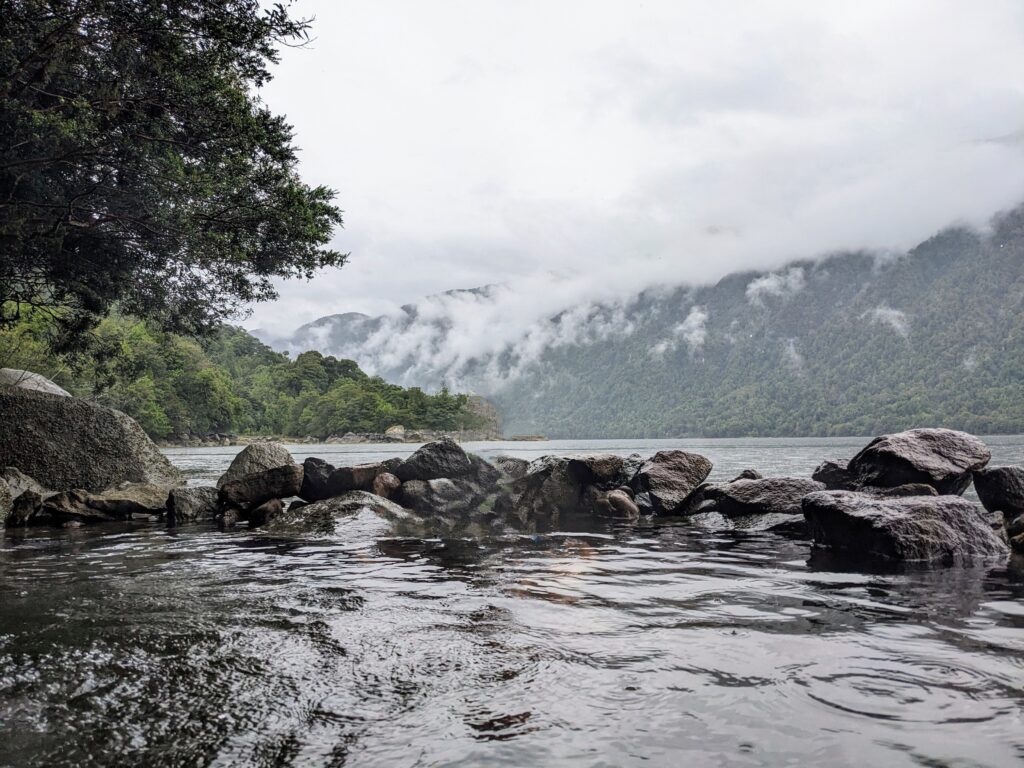
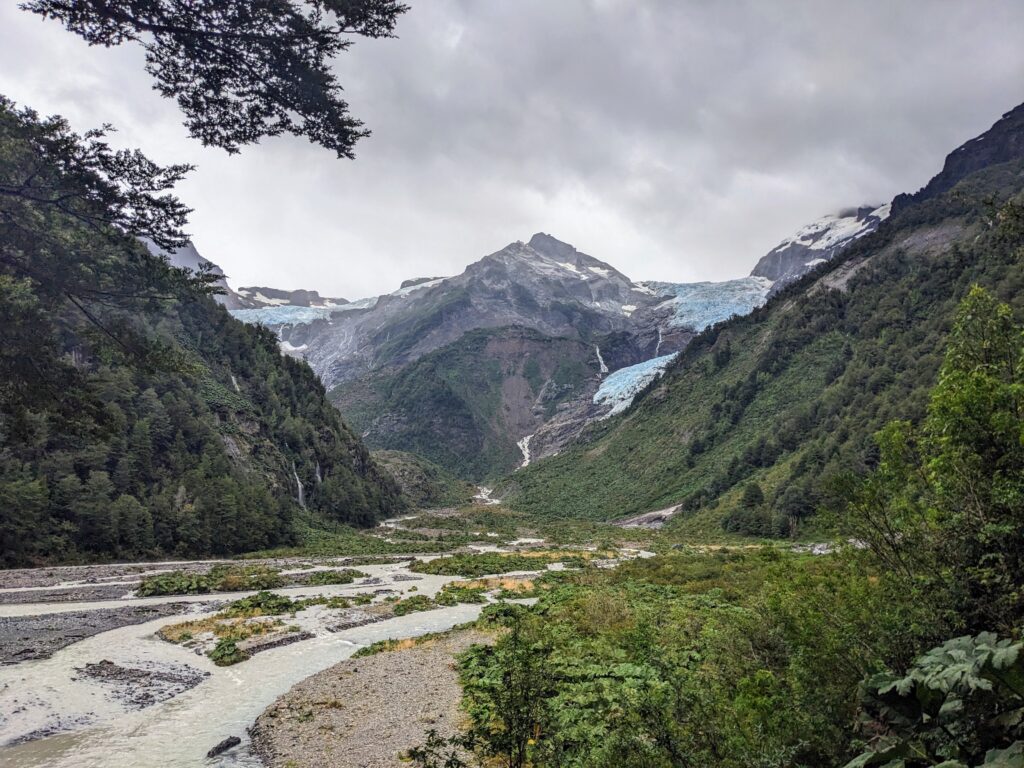
Ventisquero Yelcho
Our next stop along the Carretera Austral was a trail up to a hanging glacier, called Ventisquero Yelcho. The trail was less than 4 miles in total, and not too steep, so we decided to run the route. It was a fun, undulating and rocky trail, though very wet and muddy after all the rain – to the point where parts of the trail had become a full-on stream! Although we ran through the rainforest, we still managed to spot a few birds, mainly white-throated treerunners and white-chested elaenias.
Pumalin National Park
The next day, we visited Pumalin National Park, and en-route spotted a ringed kingfisher sitting on an electricity pylon. Coming in at 28-35 cm in length3, it was immediately apparent how impressively large ringed kingfishers are compared with the much smaller Eurasian kingfisher that we have in the UK. If I remember correctly, Ed’s eloquent comment was “bloody hell they’re massive!”.
We entered the park through the southern entrance. We had read online that the park rangers don’t always let larger vehicles enter due to previous damage to a narrow bridge. The ranger at the entrance let us through, and we were feeling very chuffed with ourselves until about half way to our destination, which was Campsite Grande. The road quality suddenly and quite dramatically deteriorated. It went from a fairly flat, good quality gravel road to a steep, muddy and rocky track! After few wheel spins and a bit of clutch burn, we decided that continuing could result in damage to Phil. So, we turned around and parked up near to the most accessible walk – the Darwin’s Frog Interpretive Trail.
This short 3.5 km trail turned out to be excellent! We unfortunately didn’t spot the trail’s namesake frog, but the act of looking for these little creatures encouraged us to slow our pace and really take in our environment. The forest was filled with an array of mosses, lichens and enormous ferns, along with dense stands of native bamboo and the gigantic leaves of giant rhubarb (which without exagerating can have an area of the size of a small car!). It had been raining all morning so the plants were dripping with moisture and the forest smelled incredible. It felt like we had entered Jurassic Park!
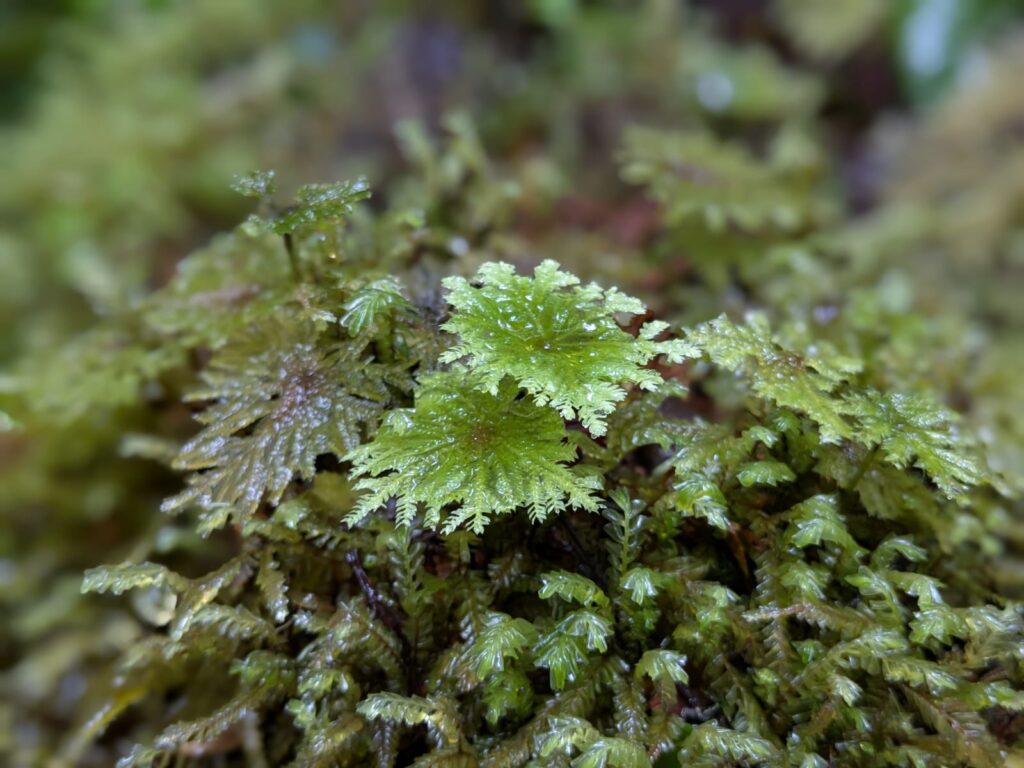

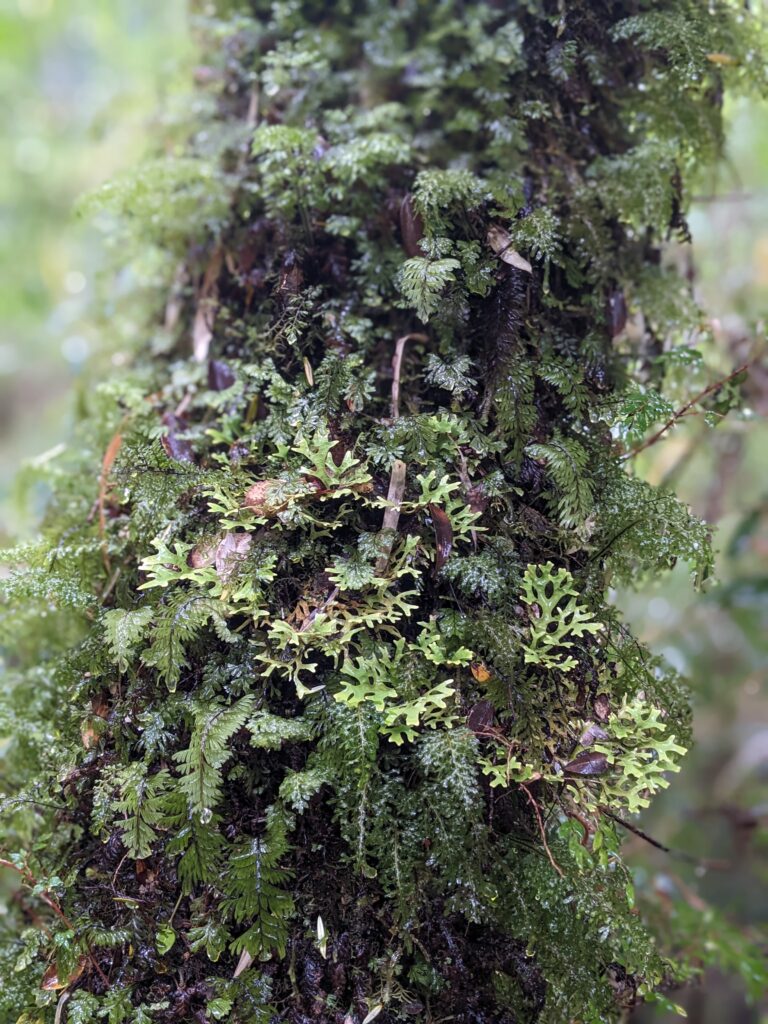
The following day we re-entered Pumalin National Park a little further to the north. We hiked up a steep trail through dense rainforest and then scrubby montane forest, finishing at a viewpoint overlooking the smoldering Chaitén Volcano. It was stunning!
Between our two days spent in Pumalin National Park, we spent the night at a peaceful park-up near a disused ferry port, just outside the town of Chaitén. From our park-up overlooking the bay at Chaitén, we saw sea lions swimming nearby, a huge flock of black-necked swans, blue-crowned herons, whimbrels, turkey vultures and of course the ever present chimango caracaras and kelp gulls. Seeing the whimbrels took us by surprise. In the UK only a small number pass through during the spring and autumn migration and so are difficult to see – Ed had only seen them in the UK once. Spotting them them in southern Chile therefore felt a bit surreal, but very cool nonetheless!
Continuing northwards
Our journey north from Pumalin National Park to reach Puerto Montt via the Carretera Austral involved three ferry crossings. Each crossing was easy as we had booked in advance and the journeys were beautiful, with views of the mountains, fjords and glaciers. Next up, we will be heading south-west from Puerto Montt to the island of Chiloe, where we hope to find some more penguins, fingers crossed!

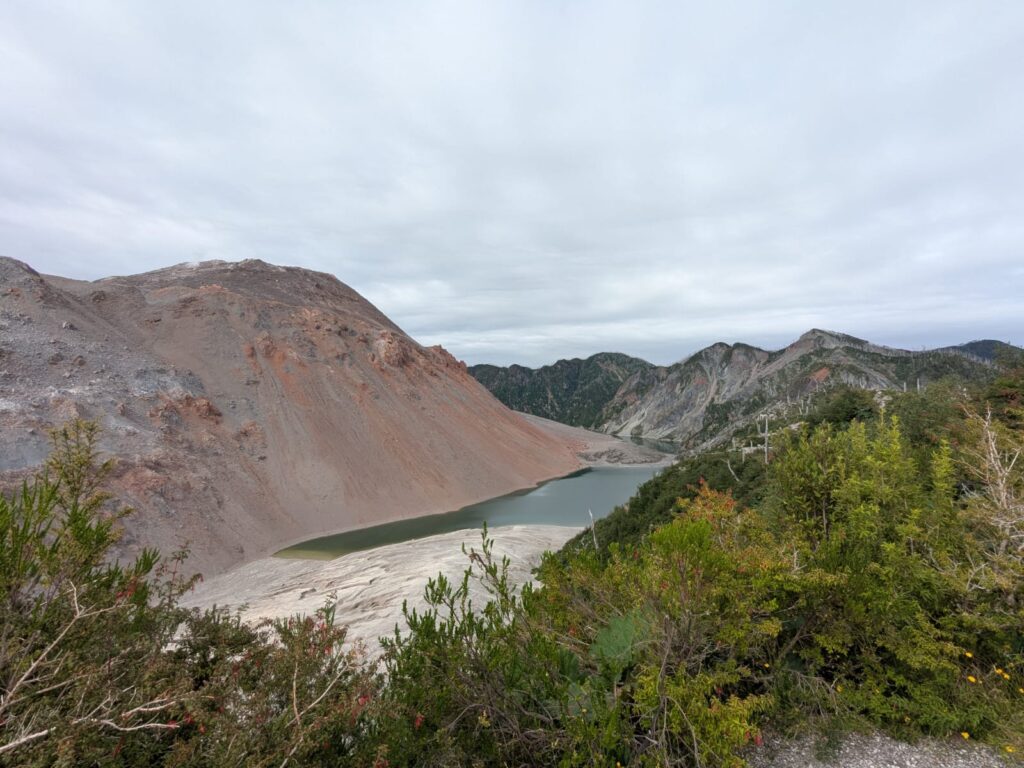
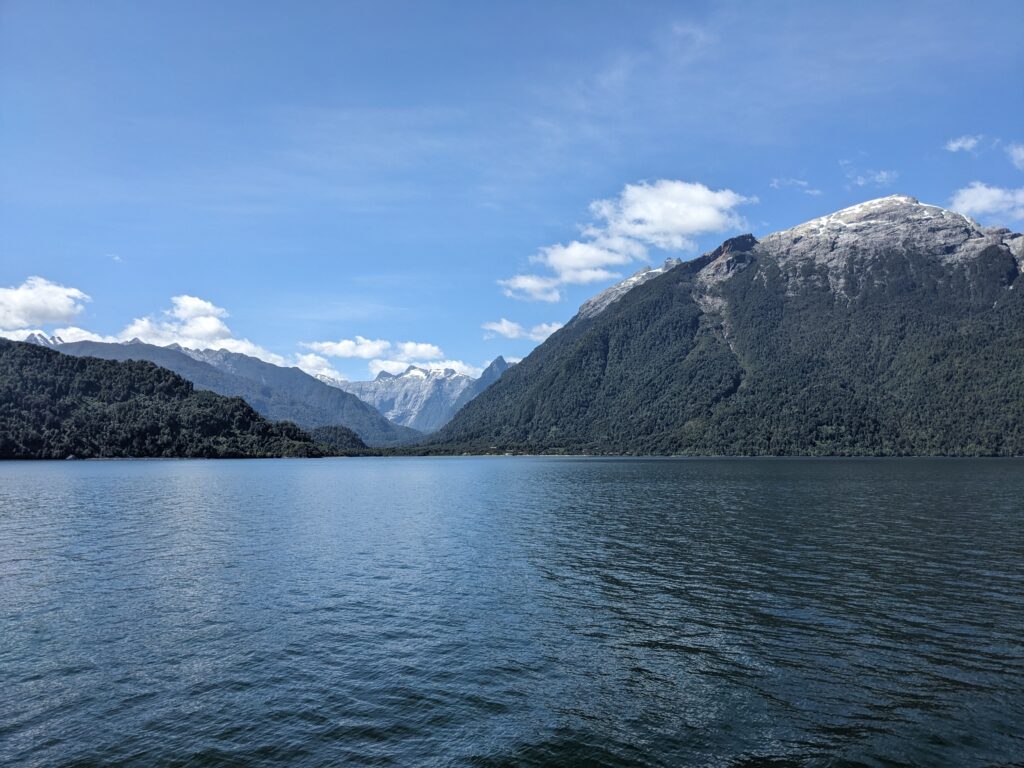
Sources
- Alan Watson Featherstone blog: https://alanwatsonfeatherstone.com/the-hummingbird-stake-out/
- Birds of the World: https://birdsoftheworld.org/bow/species/grbfir1/cur/introduction#:~:text=)%20mentioned%20%22insects.%22%20Its%20main%20diet%20item,since%20this%20is%20the%20only%20plant%20flowering
- All About Birds: https://www.allaboutbirds.org/guide/Ringed_Kingfisher/
